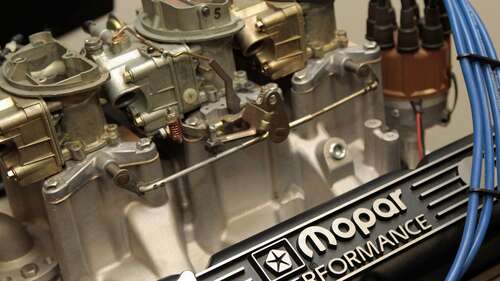
Chrysler produced 440-cubic-inch RB engines from 1966 through 1978, with horsepower advancements coming fast in the early years. Prior to 1972, the 440 RB featured cast-iron engine blocks, wedge-shaped heads, and forged steel crankshafts. Chrysler designed these engines for durability and fitted them with quality components. The automotive artisans of the day built these engines to last.
Chrysler, Dodge, and Plymouth used the early 350-brake-horsepower 440 engines, adorned with a two-barrel carburetor, in various commuter cars and trucks. The muscle-car era ushered in the 375-bhp 440 Super Commando variant topped with a four-barrel carburetor, hotter cam, and dual exhaust in 1967 for use over the next few years in such iconic cars as the Charger, Challenger, GTX, Cuda, and Road Runner Superbird. In 1969, following a moment of brilliance and excess, Chrysler engineers gained another 15 horsepower by replacing the four-barrel carburetor with a series of three two-barrel carburetors, commonly called the Six Pack.

